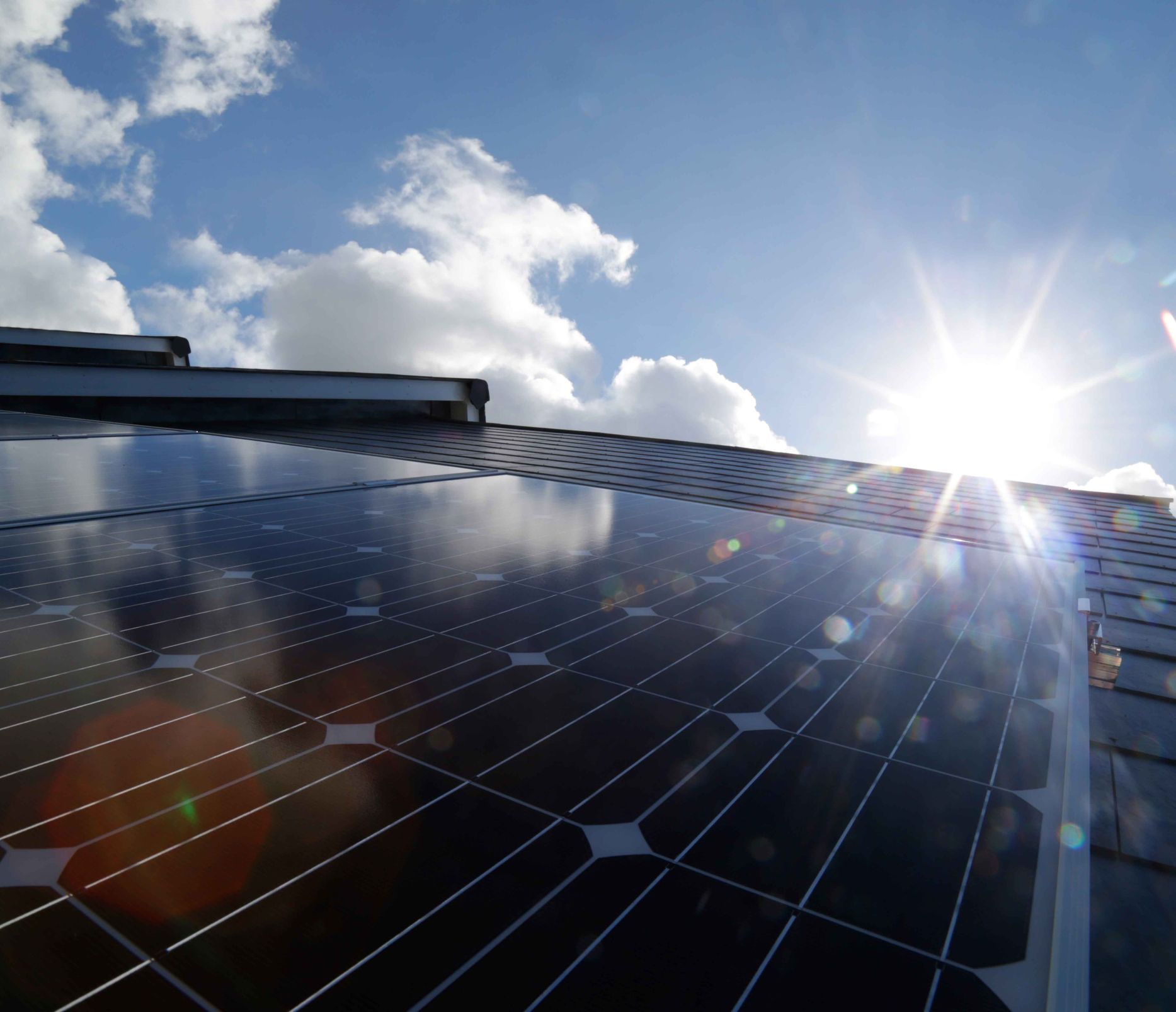Table of Contents
By adding renewable energy technology to your humble abode, you can reduce your reliance on fossil fuels as well as your carbon footprint. The latest renewable energy sources provide electricity and water without requiring significant changes to your home.
Before renewable energy technology, homeowners relied on energy from non-renewable sources, like coal or natural gas. Now, homeowners can add renewable energy technology that relies on wind, water, and the sun. These exciting technologies can slow climate change and reduce monthly energy costs. For energy that’s good for your wallet and the planet, here are seven ways to power your home with renewable energy.
Solar power
Manufacturers have been making solar panels for decades, but as more people look to go green, they’re becoming more popular than ever. Solar panels use the power of the sun to create electricity. When the sun goes down, the stored electricity powers your home.
If you’re interested in installing solar panels, there’s never been a better time. Some states offer solar rebates to incentivize more homeowners to turn to solar power. These rebates can come in the form of checks written directly to homeowners from energy companies or in the form of tax credits.
You can find cheap solar panels online and through green and energy-efficient efforts in your city. Solar power is an excellent choice for homeowners looking to cut down their monthly electric bills with a bit of tree-hugging goodness on the side.
Wind turbines
Wind turbines generate substantial energy as the wind spins the giant blades. One large turbine in a typical wind farm can power up to 460 homes. Homeowners can install their own pint-size turbines that provide reliable and consistent power. With a personal wind turbine, homeowners no longer need to rely on their local grid for power.
Water power
If your home is near running water, you might be able to use it as an energy source. Hydropower involves diverting moving water through a turbine, and the best way to harness this resource is to use water with a vertical drop. Before you install hydropower technology, you may need permission from your local government. You might also need to hire an engineer. Still, this power source is an excellent choice if you’ve got the green to go with the stream.
Solar water heating
Homeowners use ample electricity or gas to warm their water for those hot early morning showers or laundry days. Rather than relying on non-renewables, homeowners can turn to solar water heaters to heat the water in their showers and dishwashers.
Solar water heaters give homeowners the option to make a small commitment to renewable energy. The technology is easy to install and relatively maintenance-free. The sun heats water, and then the system stores the water in a cylinder that gets direct sun exposure so you can use it any time of the day or night. This change is a significant first step for homeowners looking to dip their toes into the world of sustainable energy.
The only disadvantage to this method is that your hot water isn’t limitless. You may have to rely on another water heating source or a larger tank if you’ve got a large household or love long, luxurious showers.
Geothermal heat
The Earth offers warmth that can heat your home. Homeowners who want to access energy from below the surface can use geothermal heat pumps. This technology circulates fluid through pipes buried under the ground. As the lines move the liquid, a heat exchanger removes the heat and uses it to warm the home.
When the temperatures rise, the pipes remove heat from the home to cool it by leaving the warm air in the system under the ground. Homeowners can regulate their home’s temperatures without needing electricity from non-renewable sources. This journey to the center of the earth might just save you a nickel on your monthly gas bill.
Biomass heating
Homeowners who want to avoid fossil fuels but aren’t ready to invest in solar or wind power can turn to biomass sources. This type of heating unit requires the user to burn organic materials, like wood chips or logs. Wood creates heat without the carbon footprint that comes from non-renewable sources.
With biomass heating, the carbon released is equal to the carbon absorbed by the organic material burning in the system. Paying for wood pellets or wood chips to heat your home is less expensive than paying for non-renewable energy.
Tesla Powerwall
While the Tesla Powerwall isn’t a renewable source on its own, it can help homeowners save money on electricity and reduce their reliance on traditional energy sources. Homeowners can use the Powerwall to store energy while the prices are low and then tap into that stockpile when energy prices skyrocket.
A Powerwall can store energy from a wind turbine or a solar panel, so homeowners can also use the stored power when the sun isn’t shining, or the wind is still.
Conclusion
Adding renewable energy technology is easier than it ever has been. You can quickly recoup the upfront costs with your monthly savings on electricity and gas. If you want to go green and save green, renewable energy is a no-brainer solution.








